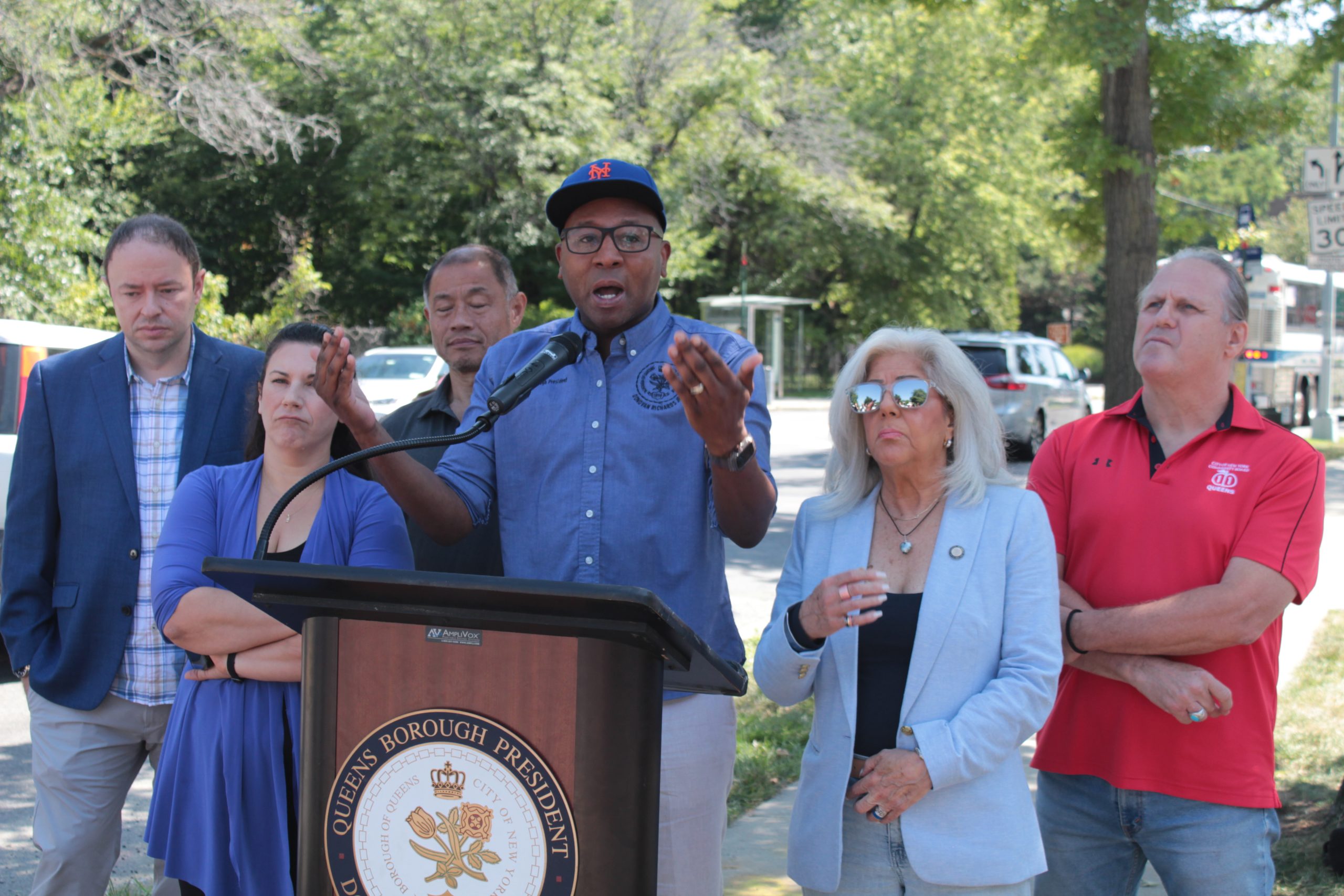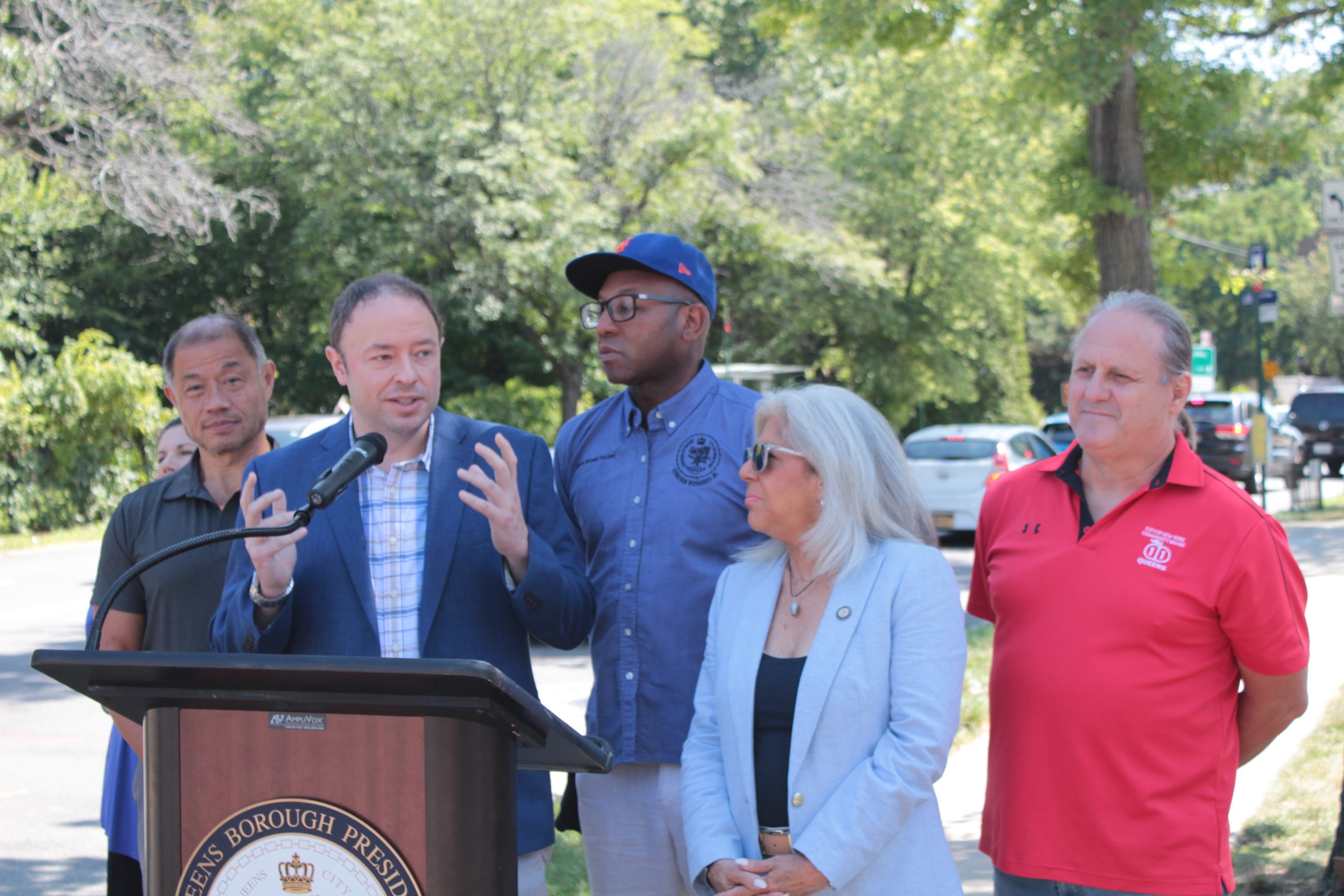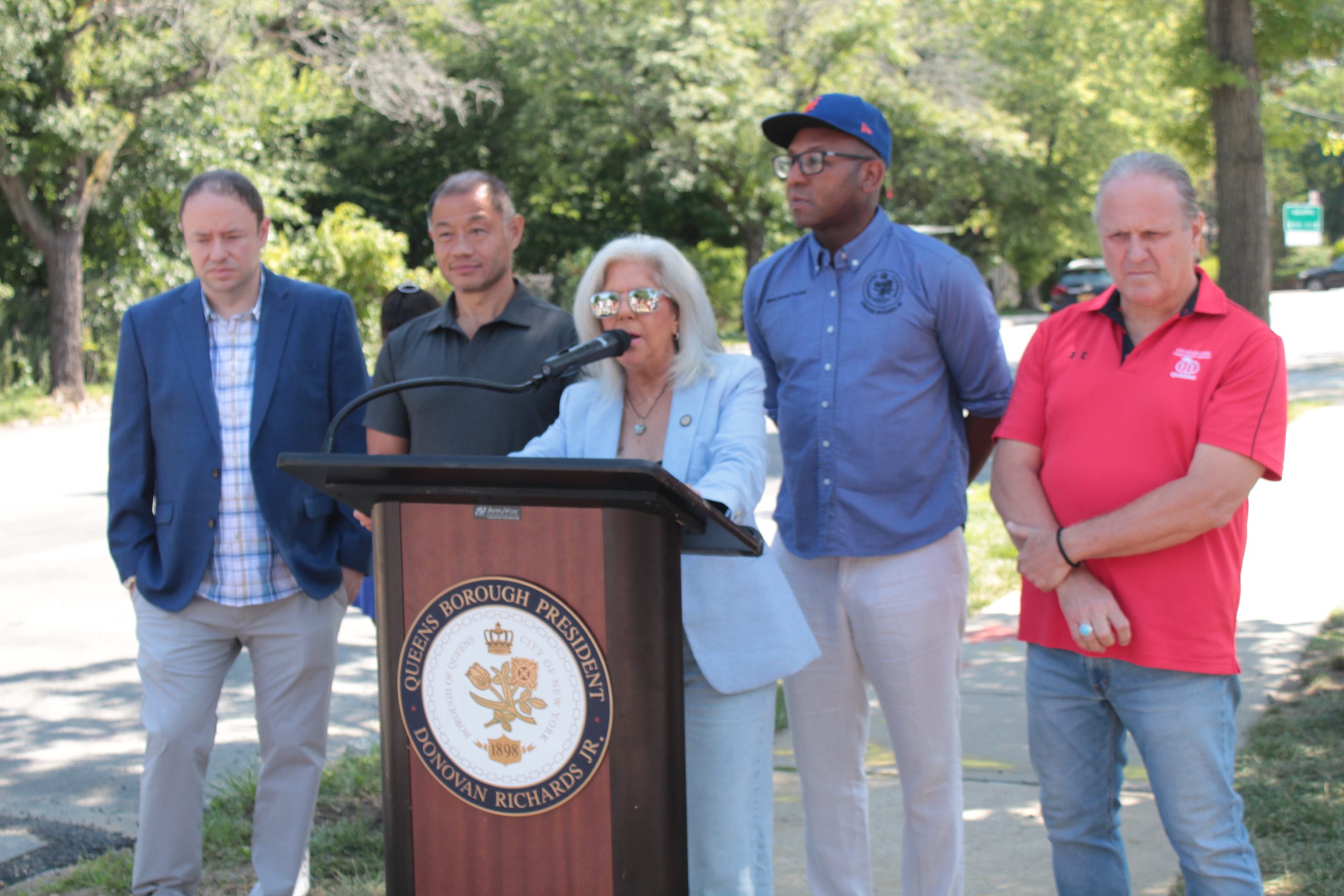
Officials Demand Flood Warning Signs After Bay Terrace Flash Flood
MOHAMED FARGHALY
mfarghaly@queensledger.com
Queens Borough President Donovan Richards joined Council Member Vickie Paladino, State Senator John Liu, and community advocates in Bay Terrace on Friday, August 8, to demand the installation of flood warning signage and enhanced storm mitigation measures after heavy flooding submerged parts of the Cross Island Parkway at the end of July.
The gathering took place near 208th Place and the Cross Island Parkway, the site where several cars were trapped underwater during the intense flash flood on July 31. Officials called on the New York City Department of Transportation (DOT) to promptly place signage alerting drivers to the flood risk during severe weather conditions.
The flooding occurred after a cloudburst dumped over six inches of rain in less than an hour, overwhelming the drainage system. In addition to vehicles stranded in the floodwaters, dozens of nearby businesses reported up to a foot of water flooding their basements.
Borough President Richards emphasized the need for both immediate and long-term solutions. While acknowledging that large-scale flood infrastructure would take time to implement, he said the installation of warning signs are of upmost importance and DOT should act on without delay.
He advocated for a “holistic” flood mitigation strategy, including street signage and measures designed to absorb and reduce excess water.
Council Member Paladino, whose office worked tirelessly during and after the flood, affirmed the urgency of the situation. They did not stop that day until all relevant agencies were contacted, she said, including the Department of Environmental Protection (DEP) and the Department of Small Business Services. Paladino stressed that while local residents know the area’s flood risks, many motorists unfamiliar with the neighborhood do not.
“People need to know that this is a flood zone,” she said.
Senator Liu highlighted the increasing frequency of extreme weather events, urging coordination between city, state, and federal agencies to protect residents. He condemned the Trump administration’s cuts to over $300 million in funding for flood protection and climate resilience projects in Queens and New York State.
Matthew Silverstein, president of the Bay Terrace Community Alliance and a longtime resident near the flooded intersection, described the situation vividly: “We joke in this neighborhood, it’s called Lake Bay Terrace. When it rains, it started down by the shopping center. It actually moved all the way down past the overpass, and it’s putting people’s lives in danger.” Silverstein urged for warning signage and legislation to implement “spongifying” infrastructure.

He recalled previous meetings with officials and said, “We asked the city as a first step for signage. We understand it’s going to take a long time to put up great infrastructure, but they were the ones that brought up signs in the first place when we were here, not us… We have horrifying images of people standing on top of their cars… trying to avoid drowning water, which came in less than an hour.”
Paul DiBenedetto, vice president of the Bayside Historical Society and Community Board 11 member, recounted the storm’s intensity during his drive along the Clearview Expressway on the day of the flood.
“So I was driving north on the Clearview, especially the day of the storm. The storm was so intense, I missed 35th Avenue. I drove right past it… I couldn’t see to the right. I couldn’t see to the left. I could barely see through my wiper blades on full speed.”
As an “amateur historian,” DiBenedetto noted that while severe storms are not new, the increasing frequency is alarming and underscores the reality of climate change. He praised Paladino for her dedication to clearing storm drains promptly.
“The water did accumulate, and then it went away. But that accumulation is unacceptable. We have to get that water out of here in the first place. And we can’t have cars driving into it,” DiBenedetto said, endorsing the installation of flood warning signage as a crucial initial step.
During the press conference, Richards also addressed the importance of bipartisan support for climate resilience funding. “Infrastructure is supposed to be a bipartisan issue. It’s not Republican or Democrat when these storms hit. No one cares what your affiliation is, rain doesn’t discriminate,” he said.
When asked about resistance from DOT to install signs, Paladino explained, “Think about what we’re talking about. We’re talking about signs, folks. How hard is it to get a sign from DOT? They’ll give you bike lanes overnight. They will extend their curbs with their Ground Zero initiative, but we want signs. Come on. DOT wake up, get in touch with the borough president. Do what you need to do, and let’s start small with signs. It’s a joke.”
Paladino also described ongoing collaboration with city agencies to monitor and clear drains after the storm and meet with affected businesses to support recovery.
A community member raised concerns about flooding at Lake Francis Lewis, where signage has been installed but flooding continues. Richards acknowledged the complexities and mentioned ongoing projects including a large rain garden near the area and potential buyouts of flood-prone properties to convert them back into parkland for water absorption.
The officials reiterated that while signage is an important first step, long-term solutions including improved drainage systems and green infrastructure are essential to address the growing threat of flash flooding in Queens neighborhoods.



